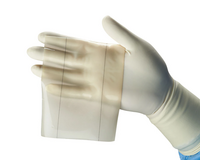
Photo from wikipedia
The aim of this study was to fabricate a novel bilayer scaffold containing cellulose nanofiber/poly (vinyl) alcohol (CNF/PVA) to evaluate its potential use in skin tissue engineering. Here, the scaffolds… Click to show full abstract
The aim of this study was to fabricate a novel bilayer scaffold containing cellulose nanofiber/poly (vinyl) alcohol (CNF/PVA) to evaluate its potential use in skin tissue engineering. Here, the scaffolds were fabricated using a novel one-step freeze-drying technique with two different concentrations of the aforementioned polymers. FE-SEM analysis indicated that the fabricated scaffolds had interconnected pores with two defined pore size in each layer of the bilayer scaffolds that can recapitulate the two layers of the dermis and epidermis of the skin. Lower concentration of polymers causes higher porosity with larger pore size and increased water uptake and decreased mechanical strength. FTIR proved the presence of functional groups and strong hydrogen bonding between the molecules of CNF/PVA and the efficient crosslinking. The MTT assay showed that these nanofibrous scaffolds meet the requirement as a biocompatible material for skin repair. Here, for the first time, we fabricated bilayer scaffold using a novel one-step freeze-drying technique only by controlling the polymer concentration with spending less time and energy.
Journal Title: International journal of biological macromolecules
Year Published: 2019
Link to full text (if available)
Share on Social Media: Sign Up to like & get
recommendations!